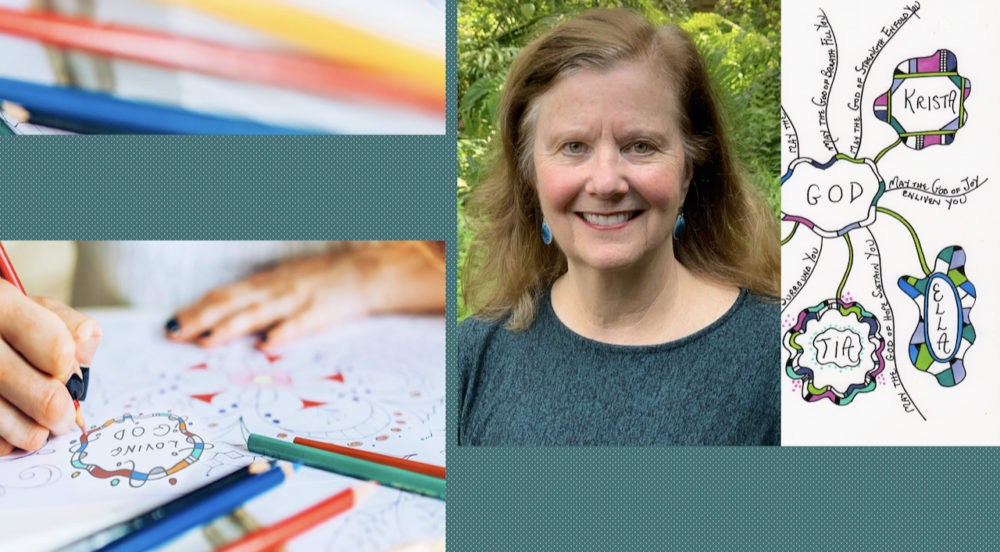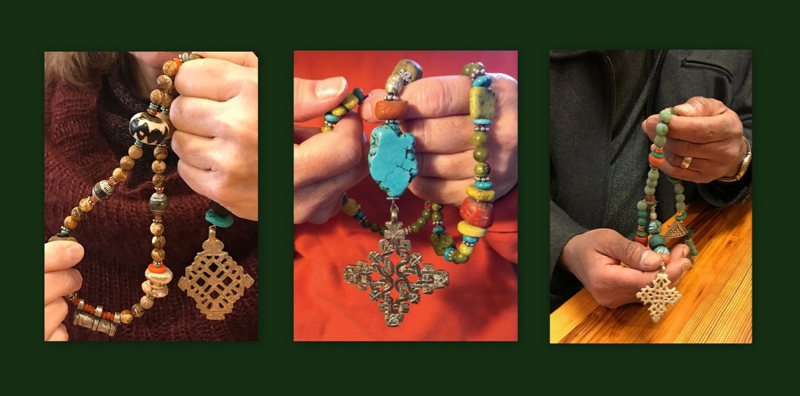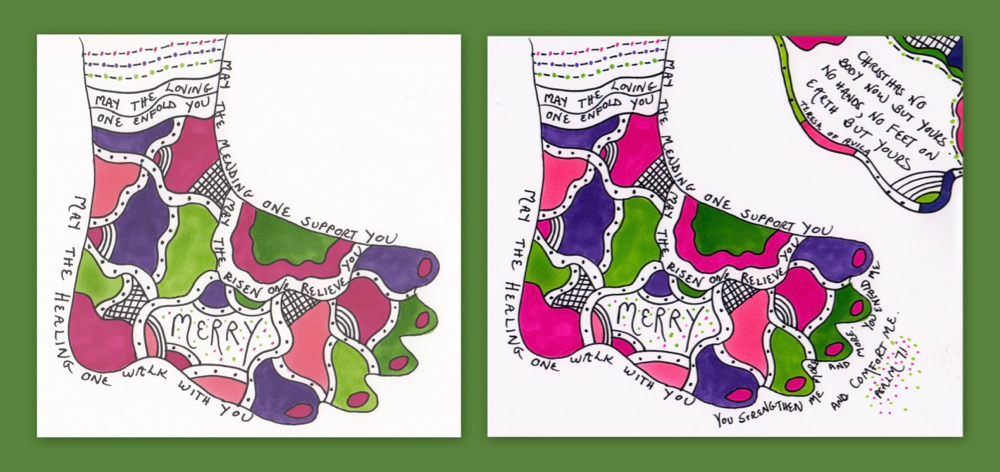
by Sybil Macbeth | Jun 15, 2020 | Praying in Color
Paraclete Press is sponsoring a series of one-day summer retreats online. I am excited that Praying in Color will be one of them. If you have not been to one of my workshops or retreats, I hope you will consider attending. Please invite your friends and Share this...

by Sybil Macbeth | Jul 11, 2018 | Praying in Color
I was three or four years old when I met my first set of prayer beads. The buff-colored rosary beads coiled cobra-like on the nightstand of my best friend and next door playmate Marian. In the daytime the plastic rosary was not much to look at: a string of plain...

by Sybil Macbeth | Jul 16, 2017 | Praying in Color
As a child and teen in the late 1950’s and 60’s in a firmly Protestant family, I was afraid of the symbols and physicality of my Catholic neighbors’ faith. Rosaries, medals of saints, statues of angels and Jesus, and crucifixes seemed both...
by Sybil Macbeth | Oct 17, 2016 | Praying in Color
When I returned last week from 30 days of pilgrimage and vacation in Europe, I realized something. While I was there I had prayed multiple prayers of thanksgiving for the beauty of the world, the fabulous food, the wonderful companionship, and the careful planning of...
by Sybil Macbeth | Sep 12, 2016 | Praying in Color
I love drawing my prayers. In a pinch, coloring pages work as a place to record my intercessions, gratitudes, and confessions, but there is something so satisfying about growing my own prayer. For the drawing-phobic like myself, directions and boundaries are sometimes...




